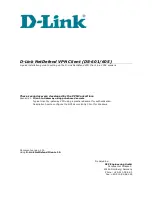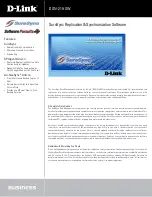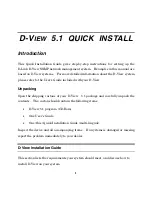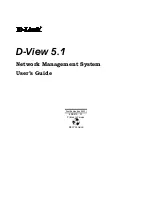
Pro Tools Reference Guide
20
In addition to manually setting Active and Inac-
tive modes, Pro Tools automatically makes
items inactive if there are insufficient or un-
available resources.
When
active
, items are fully engaged and opera-
tional.
When
inactive,
items are silent and off, although
most associated controls can still be adjusted.
Different inactive items affect available system
resources in specific ways, as follows:
Plug-ins
When a plug-in is inactive on a track, its
DSP is made available for other plug-ins and pro-
cessing. Plug-in assignments can be made inac-
tive manually or automatically (see “Automatic
and Manual Inactive Mode” on page 21).
Paths and Path Assignments
When a path or
path assignment is inactive, its mixer resources
are made available for other signal routing pur-
poses in the session. Paths and assignments can
be made inactive manually or automatically (see
“Automatic and Manual Inactive Mode” on
page 21).
Tracks
When a track is made inactive, its voices
become available for another track. Inactive
mono tracks free up one voice; inactive stereo
and multichannel tracks free up one voice per
channel. Additionally, when an audio, Auxiliary
Input, Instrument, or Master Fader track is made
inactive, its plug-ins, inserts, sends, and I/O
assignments become inactive, and the associ-
ated DSP used is freed up for use elsewhere in the
session.
Display of Inactive Items
When items are inactive, their names appear in
italics
,
and their background becomes dark gray.
When a track is inactive, the entire channel strip
is grayed out.
Active and inactive plug-ins, sends, and tracks
Active Inactive
plug-in
Inactive track
Summary of Contents for Digidesign Pro Tools 8.0
Page 1: ...Reference Guide Pro Tools 8 0 ...
Page 18: ...Pro Tools Reference Guide xviii ...
Page 19: ...1 Part I Introduction ...
Page 20: ...2 ...
Page 24: ...Pro Tools Reference Guide 6 ...
Page 40: ...Pro Tools Reference Guide 22 ...
Page 45: ...27 Part II System Configuration ...
Page 46: ...28 ...
Page 58: ...Pro Tools Reference Guide 40 ...
Page 76: ...Pro Tools Reference Guide 58 ...
Page 118: ...Pro Tools Reference Guide 100 ...
Page 127: ...109 Part III Sessions Tracks ...
Page 128: ...110 ...
Page 144: ...Pro Tools Reference Guide 126 ...
Page 170: ...Pro Tools Reference Guide 152 ...
Page 228: ...Pro Tools Reference Guide 210 ...
Page 292: ...Pro Tools Reference Guide 274 ...
Page 343: ...325 Part IV Playback and Recording ...
Page 344: ...326 ...
Page 386: ...Pro Tools Reference Guide 368 ...
Page 442: ...Pro Tools Reference Guide 424 ...
Page 443: ...425 Part V Editing ...
Page 444: ...426 ...
Page 490: ...Pro Tools Reference Guide 472 ...
Page 528: ...Pro Tools Reference Guide 510 ...
Page 566: ...Pro Tools Reference Guide 548 ...
Page 590: ...Pro Tools Reference Guide 572 ...
Page 591: ...573 Part VI MIDI ...
Page 592: ...574 ...
Page 648: ...Pro Tools Reference Guide 630 ...
Page 670: ...Pro Tools Reference Guide 652 ...
Page 679: ...661 Part VII Arranging ...
Page 680: ...662 ...
Page 756: ...Pro Tools Reference Guide 738 ...
Page 769: ...751 Part VIII Processing ...
Page 770: ...752 ...
Page 780: ...Pro Tools Reference Guide 762 ...
Page 786: ...Pro Tools Reference Guide 768 Figure 3 Quantized audio events Warp markers in Warp view ...
Page 814: ...Pro Tools Reference Guide 796 ...
Page 842: ...Pro Tools Reference Guide 824 ...
Page 843: ...825 Part IX Mixing ...
Page 844: ...826 ...
Page 976: ...Pro Tools Reference Guide 958 ...
Page 991: ...973 Part X Surround ...
Page 992: ...974 ...
Page 1000: ...Pro Tools Reference Guide 982 ...
Page 1025: ...1007 Part XI Sync and Video ...
Page 1026: ...1008 ...
Page 1080: ...Pro Tools Reference Guide 1062 ...
Page 1111: ......
















































